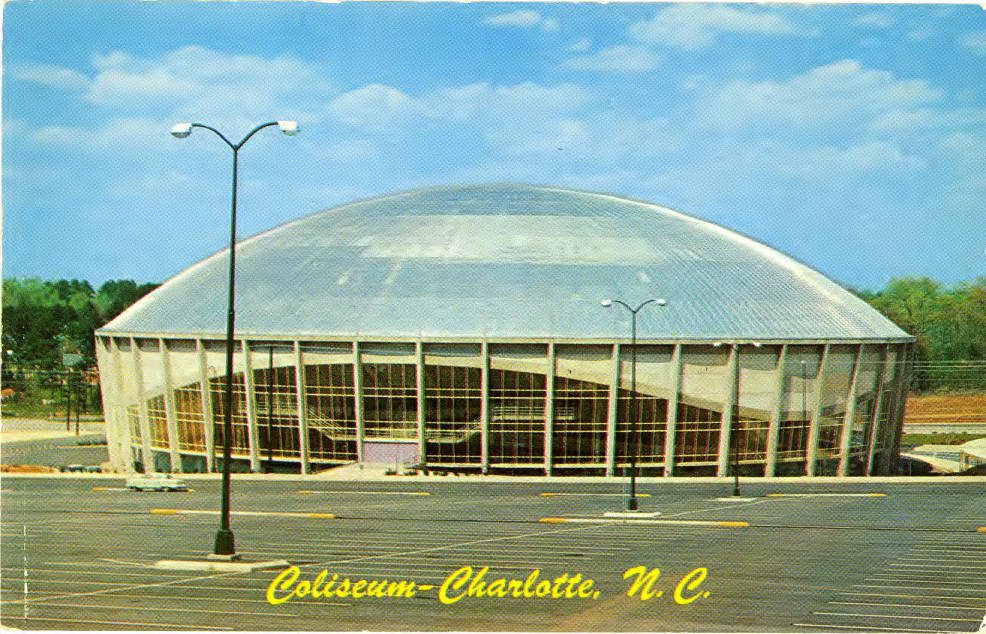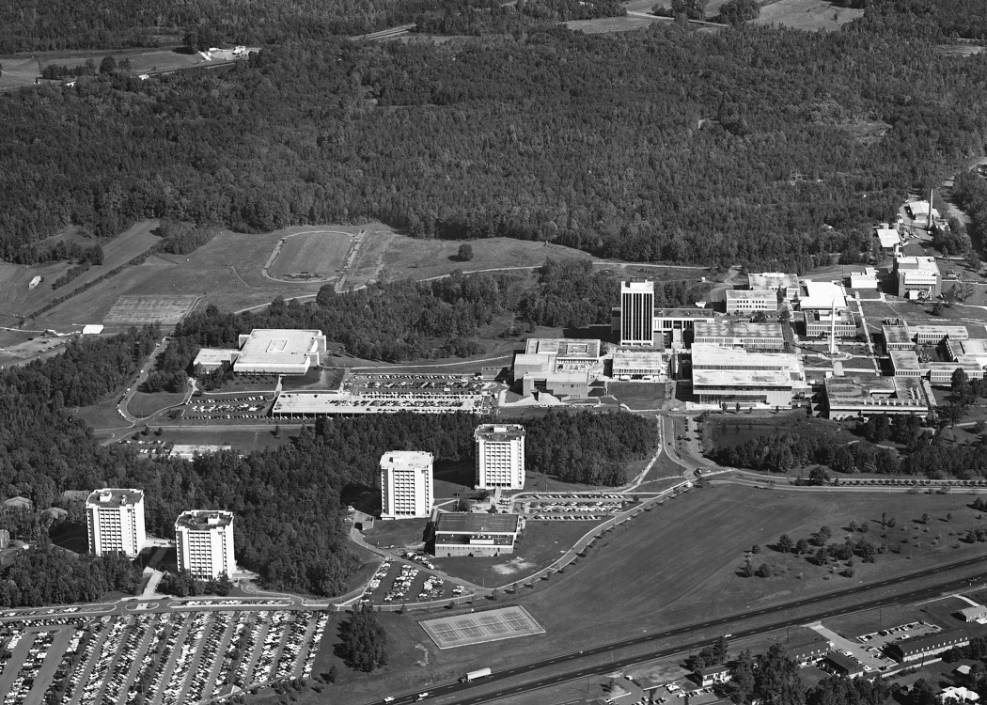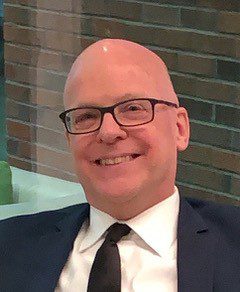Charlotte 1979: Uptown was downtown, everyone wore a tie and the city hungered for ‘world-class’ status

One of people’s favorite pastimes in fast-growing Charlotte is to look back and marvel at how much has changed in so little time. Stephen Overcash, principal at Overcash Demmitt Architects, has worked in Charlotte for 40 years, a time in which the city’s population nearly tripled, skyscrapers shot up in parking lots and downtown became uptown. We invited Overcash to reflect on changes he’s seen in Charlotte as he starts his fifth decade in the city.
I moved to Charlotte from the Deep South in June of 1979. With an architectural degree in hand, I had accepted a position with Odell Associates, and was fortunate to work directly with A.G. “Gouldie” Odell. At the time there were only two logical places for architects to work in Charlotte: SouthPark and Downtown. Even though Southpark was only 10 years old, it already appeared dated. For me, it was an easy decision to accept employment in Downtown Charlotte where there was (daytime) “energy.”
Odell had started a one-man architectural firm in 1939, and by the time I arrived, the company had grown to a regional firm of over 150 architects and engineers. Odell hated the traditional architecture of Charlotte and started designing modern, streamlined buildings. This included the Charlotte Coliseum (now Bojangles’ Arena), which was the largest unsupported dome in the world when it opened in 1955.
When I arrived in Charlotte, the city had a population of about 306,000 people, nearly all African-American or Caucasian. In 40 years, Charlotte has grown to more than 872,000 people, with a growing population of residents who identify as Hispanic, Asian and other diverse cultures.
The downtown area of about 20 blocks was occupied by high-rise buildings spreading north and south from “The Square.” ( Nobody could explain how the intersection of Trade and Tryon Streets deserved the moniker of a “Square.”) The rest of downtown – it was not “uptown” yet – was a sea of asphalt parking lots.

The Charlotte Coliseum when it opened. Photo: Photo: UNC Charlotte J. Murrey Atkins Library archive. 
Aerial photo of UNC Charlotte in 1979. Photo: UNC Charlotte J. Murrey Atkins Library archive.
Downtown Charlotte was a daytime work zone, with very little nightlife. Being the home of two large banks, North Carolina National Bank (now Bank of America) and First Union (now Wells Fargo), downtown was corporate and stuffy. Everyone wore a coat and tie to lunch, even in July. And there were only a few places to eat lunch, such as Alexander Michaels and The French Quarter (which still remain today).
One reason downtown felt so sterile was that Charlotte had gone through “urban renewal” (urban removal) in the 1960s, as the city cleared out “slum” housing in the African-American neighborhood of Brooklyn, displacing thousands and clearing the way for the Government Center and other institutional buildings in Second Ward. The city had also developed a series of elevated, enclosed walkways and pedestrian bridges which served to separate the “haves” from the “have-nots.” The Overstreet Mall, as it was called, tied together the department stores, restaurants, shops, hotels and private clubs – but robbed Charlotte of viable street life.
To present Charlotte as “The New South,” many of the city’s best examples of historical architecture were imploded. Marshall Park, located where the Brooklyn neighborhood had been, became a symbol of the New Charlotte, as pictured in the Chamber of Commerce’s brochures and on Charlotte phone book covers. While appearing as a good example of urban planning and architecture, the pictures confirmed that very few people actually used the park – due to a lack of people living downtown.
[See what’s been torn down on a list of “Lost Historic Properties” from the Charlotte-Mecklenburg Historic Landmarks Commission]
While Charlotte already hungered for the designation of “World-Class City,” in many ways it was still a small town in 1979. Many decisions pertaining to Charlotte’s future were made behind closed doors by prominent businessmen, at private clubs.
Many regulations were simpler. In 1979, zoning consisted of colored maps which designated permitted project types with variations in the intensity of uses. Depending on adjacencies, buffers were often required between residential and commercial. Walking anywhere in Charlotte was certainly not encouraged. On a positive note, Building Standards had an extremely nice gatekeeper (Michael Burkhart) and architects could often “walk-through” construction permit approvals in a matter of hours.

Overcash
Charlotte started obtaining national attention in the early 1980s when Yankee “carpetbaggers” like IBM and Royal Insurance began discovering the benefits of the South. To accommodate this growth, Charlotte needed a more efficient airport, and Odell had just started the design of a new International Airport in 1979. Before the airport expansion, visitors literally walked across the tarmac to greet relatives at the base of the airplane steps.
By the 1990s, Charlotte started to come alive and become a fun place to live, work and play. The over-street walkways were outlawed (for the most part) and some were removed, in order to return street-life to where it should be: on the street! Thanks to a trend toward New Urbanism, the Planning Department recognized the need for edgier zoning districts. This allowed developers to reduce parking, locate buildings closer to the street and reenergize the public realm. It finally became acceptable to integrate residential units, retail, office and hotels without buffers, in mixed-use developments.
Tim Demmitt and I started Overcash Demmitt Architects in 1984 and have enjoyed being a part of Charlotte’s growth and transformation. While we often disagree with the government and planning departments about planning and architectural principles, I cannot think of a better place where I would rather continue my architectural career. Why? While there are many exciting opportunities, Charlotte is still small enough for the “little guy” to make a difference.
Stephen Overcash